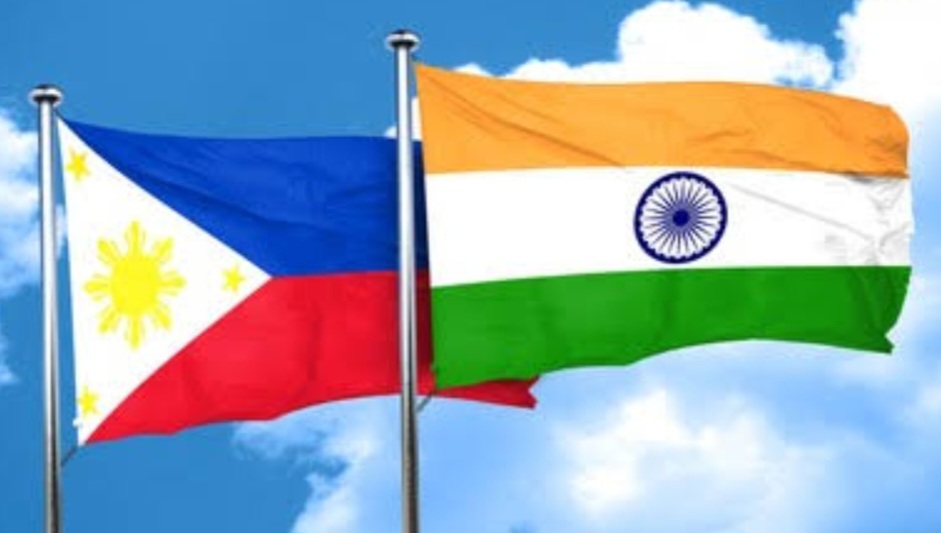By: Aishwarya Dutta

The South China Sea, situated in the southern part of the Chinese mainland, is also bordered by countries such as Brunei, Indonesia, Malaysia, Philippines, Taiwan and Vietnam. The countries have bickered over territorial control in the sea for centuries, but in recent years tensions have soared to new heights. The South China Sea is one of the most strategically critical maritime areas and China eyes its control to assert more power over the region. In 1947, the country, under the rule of the nationalist Kuomintang party, issued a map with the so-called “nine-dash line”. The nine-dash line essentially encircles Beijing’s claimed waters and islands of the South China Sea — as much as 90% of the sea has been claimed by China. The line continued to appear in the official maps even after the Chinese Communist Party (CCP) came to power. In the past few years, the country has also tried to stop other nations from conducting any military or economic operation without its consent, saying the sea falls under its Exclusive Economic Zone (EEZ). China’s sweeping claims, however, have been widely contested by other countries. In response, China has physically increased the size of islands or created new islands altogether in the sea.
The South China Sea sometimes referred to as the “Asian Mediterranean” is a ‘marginal sea’ as it is largely surrounded by land area with access to those areas, for instance between Western Malaysia and Indonesia, the Karimata Straits in the Southwest and the Philippines and Taiwan, the Luzon Straits to the Northeast. The sea covers an area of 3.3 million-kilometer square excluding the Gulfs of Thailand and Tonkin but if they are included the area would increase to 3.8 million kilometer square.
India-Philippines joint strategy in the South China Sea
India and the Philippines launched a two-day naval drill near the Scarborough Shoal in the South China Sea. China claims nearly the entire South China Sea, overlapping with maritime zones of Brunei, Indonesia, Malaysia, the Philippines and Vietnam. The waterway is a strategic shipping route where $3 trillion of annual shipborne commerce takes place. China also prefers resolving bilateral disputes without the interference of any third party. The Philippines has conducted “maritime cooperative activities” with foreign navies since late 2023 as part of its push to counter China’s expansive claims in the waterway, including joint passages with treaty ally the United States, as well as Japan, Australia, France and Canada.
The dispute between China and the Philippines in the South China Sea first emerged when Chinese fishing vessels fished in the West Philippines Sea, which the Philippines claims to be part of its exclusive economic zone (EEZ). With the presence of Chinese maritime militia, the Philippines felt that its sovereignty was threatened and accordingly raised diplomatic protests. However, such protests were ignored by China. Following this, the Philippines commenced maritime drills within the West Philippines Sea, which subsequently led China to demand such activity be stopped on the grounds of respect for its sovereignty.
India and the Philippines began the two-day “bilateral maritime cooperative activity” on 2nd of August in waters close to theScarborough Shoal, a focal point of the maritime dispute between China and the Philippines. There are several speculations behind India’s stance on this matter but it is obvious that India is joining these efforts owing to its shared concerns about China’s growing maritime power, including in the South China Sea. Indian Navy ships that took part included guided missile destroyer INS Delhi, tanker INS Shakti and corvette INS Kiltan. The Philippines deployed two frigates, BRP Miguel Malvar and BRP Jose Rizal.
Bilateral talks and its significance
Philippine President Ferdinand R. Marcos Jr. is on a 5 day state visit to India and India and the Philippines jointly announced an upgraded strategic partnership on August 5, with utmost focus being on the deepening of defence and maritime cooperation, as both the countries are addressing their security concerns due to China’s increasing assertiveness in the Indo-Pacific region. The two nations signed 14 landmark agreements boosting defense, trade, digital tech, space, law, and tourism. PM Modi hailed the 75-year-old bond as a “partnership by destiny,” while President Marcos hailed India as Manila’s fifth strategic partner. India and Philippines thus celebrated their 75 years of diplomatic relations and both the countries also acknowledged the “long-standing friendship based on mutual respect, trust, civilizational contacts, shared values and culture.”
Both the countries have a long history of jointly signing several treaties like the Treaty of Friendship signed on 11 July 1952, the Memorandum of Understanding on Policy Consultation Talks signed on 28 November 2000, the Agreement on the Establishment of a Joint Commission on Bilateral Cooperation signed on 5 October 2007, and the Declaration on the Framework of Bilateral Cooperation signed on 5 October 2007. Thus both the countries are seeking to impart a qualitative and strategic new dimension and long-term commitment to the bilateral partnership and to actively develop cooperation in political, defence and security, the maritime domain, science and technology, climate change, space cooperation, trade and investment, industry collaboration, connectivity, health and pharmaceuticals, agriculture, digital technologies, emerging technologies, development cooperation, culture, creative industries, tourism, people-to-people exchanges and other fields in the years ahead.
In the political sphere both the countries are cooperating by strengthening engagement through high-level exchanges on a regular basis and dialogue on bilateral, plurilateral and multilateral issues of mutual interest. Such instances include the convening of the Joint Commission on Bilateral Cooperation (JCBC), Policy Consultation Talks and Strategic Dialogue; Intensifying dialogue through the various bilateral institutional mechanisms, including the Joint Working Groups (JWGs) on Trade and Investment, Counter-terrorism, Tourism, Health and Medicine, Agriculture and Financial Technology; Encouraging interaction between the legislatures of the two countries, particularly exchanges between young leaders of both countries, to further strengthen mutual understanding;
In the sphere of Defence and Security cooperation, both the countries acknowledged the progress made under the Agreement on Defence Cooperation signed between India and the Philippines on 4 February 2006. To facilitate the regular convening of institutional mechanisms major steps have been taken like the establishment of the Joint Defence Cooperation Committee (JDCC) and Joint Defence Industry and Logistics Committee (JDILC) for dialogue on defence cooperation, with emphasis on defence industrial collaboration, defence technology, research, training, exchanges, and capacity building. When we look at maritime cooperation between India and the Philippines, we see a further deepening of relations which includes the annual India-Philippines Maritime Dialogue, first held in Manila on 11-13 December 2024. India would host the next dialogue as a way to maintain the positive momentum of maritime engagement. Both the countries foster greater security cooperation through regular dialogues, engagements and exchanges of best practice on UN peacekeeping operations (PKO), supply chain management, military medicine, global and regional security environment, traditional and non-traditional security concerns such as maritime security, and cyber security and critical technology issues, as well as the protection of critical information infrastructure, and security-related concerns on economic matters;
Economic cooperation has also reached newer heights where both sides have shown a tendency of promoting business and commercial linkages as a key driver of the India-Philippines partnership. There has been a steady increase in bilateral trade, which reached approximately US$ 3.3 billion in 2024-25. There has been a common agreement of fostering partnerships in infrastructure development and in implementation of connectivity and transport projects, facilitating Joint Customs Cooperation Committee meetings for improved trade facilitation through simplified customs procedures.
Strengthening cooperation in the field of Information and Communication Technology including information sharing and exchange of best practices on Edu-tech and Med-tech; Enhancing all modes of connectivity between India and the Philippines, including physical, digital and financial linkages.
Conclusion
The South China Sea remains a strategic mess as far as China and various South-East Asian countries are concerned. There seems to be a never-ending brawl over maritime access and usage. The recent times have seen smaller powers like the Philippines protecting their maritime rights steadily by partnering with various other countries to give a befitting reply to Chinese domination in that area. The latest confrontations consist of dangerous maneuvers, physical interference, continued disputes over legal maritime boundaries, and growing international attention and involvement as both sides seek to assert their respective claims.

About the Author
Aishwarya Dutta is an independent researcher and academician and is currently Assistant Professor of Political Science SGGS College, Chandigarh.


Usually I do not read article on blogs however I would like to say that this writeup very compelled me to take a look at and do so Your writing taste has been amazed me Thanks quite nice post